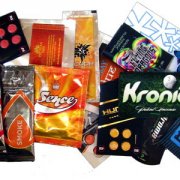Synthetics & 'legal highs'
Synthetics & 'legal highs'

‘Legal highs’ is a general term for substances that are designed to mimic or produce similar effects to common illicit drugs such as cocaine, ecstasy and cannabis. They may also be known as NEDs (new and emerging drugs) or NPSs (new psychoactive substances).
‘Legal highs' have different chemical structures to the illicit substances that they are trying to mimic, so they can be marketed as ‘legal’ and a safe and acceptable alternative to illicit drugs; however, this is not the case.
It is not known how safe they really are as there is limited research on the short-, medium- and long-term effects of these substances. There are also concerns about what is actually in ‘legal highs’. There are not always quality control checks on ‘legal highs’, so it is not always known what substances they contain.
The three most common types of ‘legal highs’ are:
- ‘herbal highs’ or ‘party pills’
- synthetic cannabinoids
- research chemicals and drug analogues
Please note: Although these drugs are often called ‘legal highs’, some of these substances are actually illegal in Australia.
(From www.druginfo.adf.org.au/drug-facts/legal-highs )
For more information on the changing legal landscape for synthetics click here.
Synthetics Risks
The main effects of almost all ‘psychoactive’ drugs, including ‘legal highs’, can be described using three main categories:
Synthetics Effects
The main effects of almost all ‘psychoactive’ drugs, including ‘legal highs’, can be described using three main categories:
- stimulants
- ‘downers’ or sedatives
- psychedelics or hallucinogens.
Whilst drugs in each of the categories will have similarities in the kinds of effects they produce, they will have widely different strengths.
Synthetics Details
Herbal Highs:
